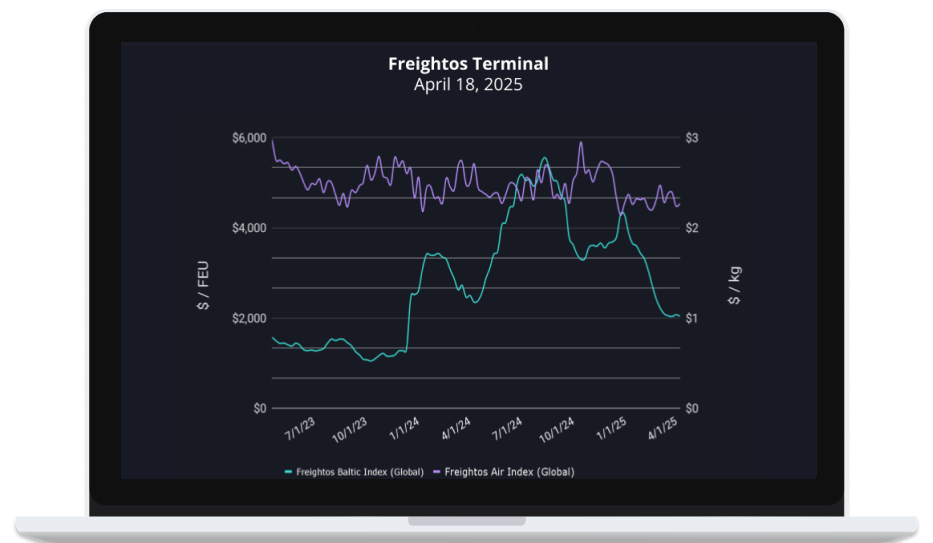The decrease in shipping bookings between China and the United States is stirring up significant changes in the logistics sector. This article sheds light on the implications and strategic responses within the freight industry.
Understanding the Current Shipping Landscape
The landscape of international freight is evolving rapidly, driven by various economic factors. Recently, data indicates a noticeable decline in bookings from China to the United States. This situation has prompted logistics companies and freight carriers to adapt their strategies to manage the fallout effectively.
Weekly Highlights of Freight Rates
Recent Trends
- Shipping costs from China to Northern Europe remain stable at $3.75/kg.
- Meanwhile, rates between Northern Europe and Northern America saw a minor decrease of 1%, dropping to $2.11/kg.
Analysis of Market Responses
Despite measures such as tariff exemptions on electronics, the drop in bookings has been stark. Reports show that vessels-bound for the US are occasionally leaving ports in China only partially loaded. This scenario highlights a growing trend where numerous shippers are opting to cancel orders, motivated by rising costs that have surged remarkably in recent weeks.
As a countermeasure, freight carriers have begun implementing blank sailings, reminiscent of strategies employed at the beginning of the COVID-19 pandemic when demand plummeted.
Inventories and Adaptation Strategies
Importers, having previously ramped up their inventories in anticipation of demand, now find themselves with excess stock. This inventory cushion allows them the flexibility to navigate the tariff hikes expected on Chinese imports over the next few months. Concurrently, the rise in demand for bonded warehouses in the US is indicative of a precautionary approach among shippers waiting for a resolution to ongoing tariff engagements.
Seeking Alternatives
The European Commission has started closely scrutinizing import levels due to fears of an incoming flood of Chinese goods, which could potentially aggravate existing port congestion in major European hubs. Furthermore, there is speculation that some canceled orders from US buyers may be redirected towards the European market, further escalating the dynamics of international shipping.
Tariffs and Their Effects on Trade
When analyzing the broader picture, China’s response to US tariffs has set it apart from many other countries that are progressively engaging in negotiations. The ramifications of these tariffs extend with the potential for reduced US exports as well. The landscape appears bleak, as both nations are navigating a challenging path to economic reconciliation.
Future Implications for Ocean Freight
As the projections unfold, experts suggest that a combination of existing tariffs and potential new ones could drastically diminish US container import volumes for the second half of the year. The World Trade Organization has predicted that global trade might contract by as much as 1.5% amid current tensions, with US imports likely to see an incidence as high as 10% or more. Most of this downturn is anticipated to manifest in the latter part of the year.
New Developments and Regulations
Amidst these fluctuations, the United States Trade Representative has proposed a revised policy concerning port call fees targeting Chinese carriers. This change, while it introduces significant fees, seeks to ensure that port operations remain uninterrupted, thus easing some fears about congestion.
Air Cargo Challenges
As the situation has unfolded, air cargo markets have begun to feel the strain. Major carriers such as UPS and FedEx are applying surcharges on parcels shipped from China to the US, a response to escalating demand just before a significant policy deadline. As a result of recent tariff changes, service providers like DHL have altered their handling procedures, reflecting the turbulence in this segment of the logistics chain.
The Effect on Chinese Retailers
Retailers operating in the US, such as Temu and Shein, have already indicated a rise in prices due to shifts in policy. This adjustment further complicates the logistics of freight and shipping as companies attempt to balance compliance with profitability.
Conclusion: Navigating the Changes
As the intricacies of global logistics become increasingly pronounced, businesses must stay ahead of the curve by strategically managing their shipping routes and regulatory compliance. GetTransport.com stands out by offering flexible, cost-effective solutions for businesses facing these challenges. Whether managing office relocations, cargo deliveries, or moving large items, streamlined services empower businesses to navigate this dynamic landscape efficiently.
No matter how the dust settles from the recent fluctuations, the ability to adapt and plan accordingly remains paramount. The forecast indicates potential impacts on freight shipping in the coming months. GetTransport.com remains dedicated to aiding customers through these uncharted waters, ensuring transparency and reliability in cargo transport.
For professionals navigating the busy lanes of freight management, GetTransport.com provides a comprehensive suite of services. Streamlining logistics, offering competitive pricing, and delivering exceptional support, the platform serves to simplify the process of securing reliable and affordable transportation options. Start planning your next delivery and secure your cargo with GetTransport.com.

 A csökkenő kínai-amerikai szállítmányok hatása a globális árufuvarozási dinamikára">
A csökkenő kínai-amerikai szállítmányok hatása a globális árufuvarozási dinamikára">